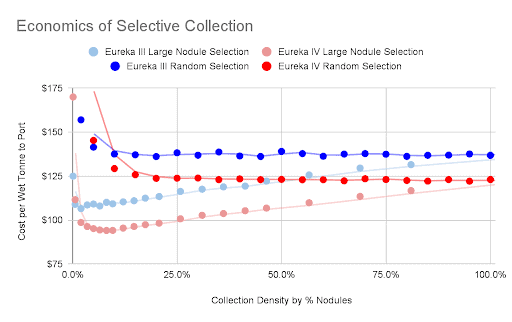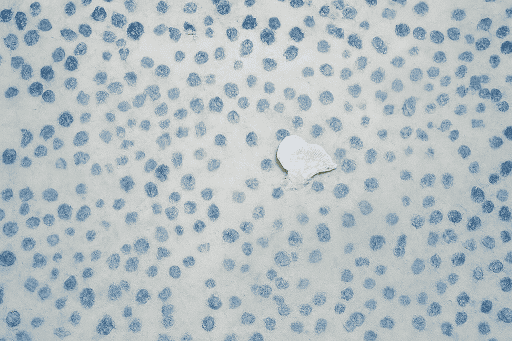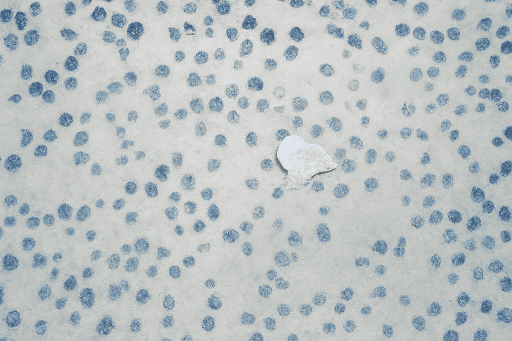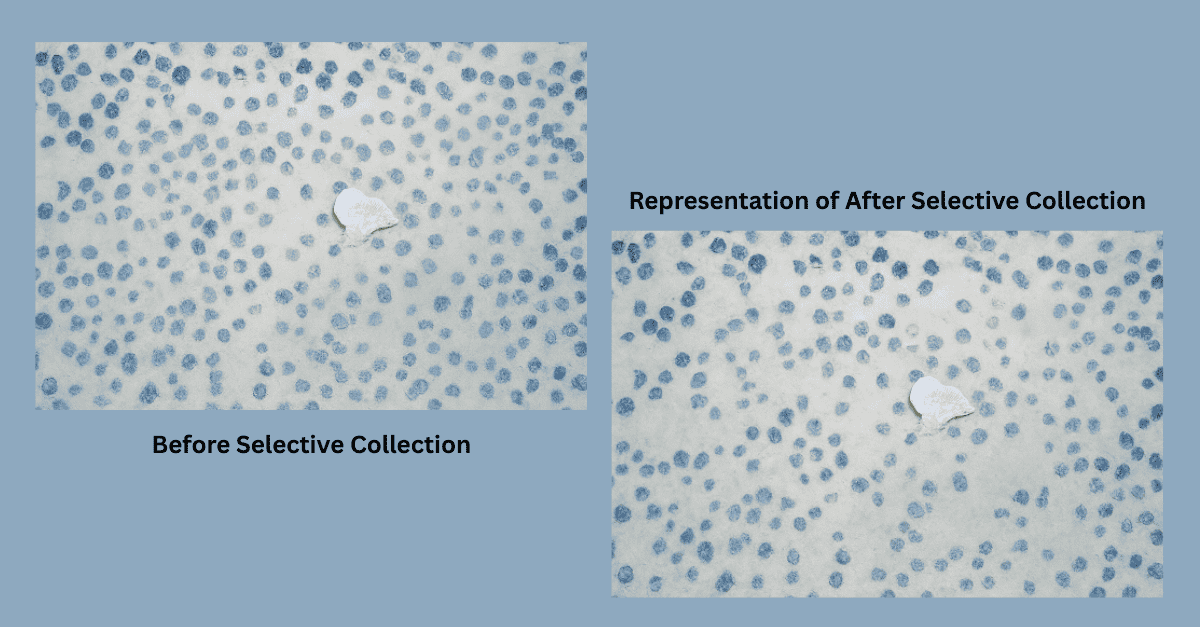Our Eureka collection system can be profitable even when picking up only 1% of the nodules. Our peak economics is when we leave 94% of the nodules undisturbed. The net result is that we would collect from a larger area of the seabed.
A key feature of the Eureka collection system is the selective collection technology we have incorporated into the vehicles, which allows us to program a percentage of nodules to remain undisturbed. In addition to leaving a percentage of nodules undisturbed to serve as habitat for subsea life that lives among them, the technology also identifies megafauna and leaves a wide swath around all detected life, as shown below.
Our approach is truly precautionary: we can start collecting material profitably and with a highly conservative environmental impact, so that as we understand the environmental impacts of this activity, we can possibly increase the percentage collected over time.
At Impossible Metals, we encourage and appreciate others providing criticisms and input into our solution. It was due to recent suggestions by the Deep Sea Mining Campaign that we began to further explore this aspect of our system. While many of the statements in the document are misleading, out of date, and poorly referenced, we found one about the percentage of nodules being collected to be particularly constructive.
“It could be concluded that Impossible Metals’ extraction targets are based on financial rather than ecological imperatives, as no scientific basis has been presented for the assertion of sustainable or selective nodule mining. As such these targets are unlikely to maintain ecosystem viability and function. Ecological consequences would only become evident through long term studies, by which time the impacts of commercial mining are likely to be irreversible in human timeframes.”
We based the target of 30% left behind on 30×30, which specifically calls for the effective protection and management of 30% of the world’s terrestrial, inland water, coastal, and marine areas by the year 2030. We had previously assumed that increasing the percentage of nodules collected would reduce our economics, just as DSMC assumed in their paper. We wanted to explore and understand at what point the Eureka collection system is no longer profitable. By reducing the percentage of nodules collected and re-optimizing our design for this new target, we found that, counterintuitively, profitability is increasing. There are two key economic drivers at play when adjusting the percentage collected for the area travelled over. Travel speed is one, and nodule size is the other. Maintaining the same mass throughput while collecting a lower nodule density requires the vehicle to travel faster. Since our cost of increased travel speed is relatively modest, there is not a meaningful downside to travelling faster and leaving a high percentage of nodules undisturbed. Nodule size is the other factor, and since our cost per pick is relatively consistent, by travelling faster over the seafloor and picking only the highest-value (largest) nodules, we can leave a high percentage of material behind while increasing our profitability.
The assumptions used in this analysis were NORI-D and nodule size distribution, based on the most recent TMC pre-feasibility study.

By running several simulations for both the Eureka III-sized (4MT) and Eureka IV-sized (12MT) vehicles, starting at 2%, then 5%, up to 100% at increments of 5%, the cost per tonne of nodules to port for each increment was calculated.

As expected, as the percentage of nodules collected approaches zero, the cost per tonne of material to port starts to jump up. However, before that, good economics are achieved at surprisingly small percentages. When collecting all sizes of nodules equally at between 10% to 20% of the nodules, the economics reach a peak, and there is no difference in economics in increasing the density of nodule collection. When simulating selection for the most valuable nodules, we find that our peak economics occurs when collecting approximately 6% of the nodules by quantity (this corresponds to 20% of the mass).
The nature of selective collection is the ability to decide between which nodules to collect and which nodules to leave undisturbed. There are several strategies for this, and Impossible Metals will seek guidance from scientists and regulators. It is possible to collect an even distribution of nodules; it is also possible to collect nodules in small, dense patches, leaving habitat corridors and small pockets of disturbed seabed. Since our vision system not only detects the locations of the nodules but also measures their sizes, it decides which nodules to collect based on size. The ability to have this level of selectivity is a truly precautionary way for the industry to begin.

Before Selective Collection

Representation of After Selective Collection
